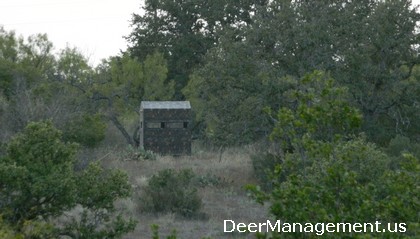Good white-tailed deer hunting on a property typically comes down to years of continuous proper deer management. There are tried-and-true practices that can produce and grow quality animals just about anywhere across the whitetail’s range. But even good management does not always translate to big bucks on the ground, at least not every year. Hunting them, seeing them still comes into play.
But whether you are out chasing deer or not, a lot of what ends up on a buck’s head in a given year can be influence by habitat conditions. Someone that does not manage their property for whitetail can always blame the weather on poor deer hunting if it doesn’t rain. But when it does rain, will they have the plants necessary to get deer in great shape and grow antlers beyond their expectations? Probably not.

Although management practices can alleviate the impact environmental conditions play with deer herd dynamics, it’s always nice to have rain. Here is what Texas Parks and Wildlife Department (TPWD) has to say about the upcoming season in the diverse state of Texas:
TPWD: Another aspect of typical hunting season forecast is the prediction of antler quality and how many big bucks are out there across the landscape.
“As far as antler quality goes, rainfall plays a key role by influencing the native habitat and forage, ultimately affecting the quality of nutrition a buck receives in order to grow antlers,” Cain explains. “In dry years we typically see a decline in overall antler quality and increases in wet years much related to nutrition.”
Some managers provide supplemental feed to buffer against nutritional impact resulting from drought. However, research in South Texas has shown that native habitat is crucial to deer nutrition even when supplemental feed is provided. So maintaining quality native habitat on your property is important.
Judging from the phone calls and emails Cain has received from landowners around the state, bucks look to be in good body condition, antlers are in great shape and they are expecting a much better season than the last two years.”
Cain predicts antler quality to be above average for those areas receiving good spring rains and average for those that were a little drier this spring and summer. The good news is that drought or no drought, Texas still produces some whopper bucks each year.
According to an article published by Boone and Crockett several years back Texas ranks fifth all time for entries into B&C record books. Based on 40-plus years of data collected by TPWD biologists each season the average B&C score for a 5 ½ year old buck is 124, with 9.1 points, and a 15.8 inch inside spread. Even the younger bucks at 3 ½ years of age average a 13.5 inch inside spread and 8 points.